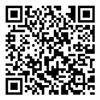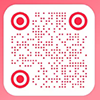Specific Solutions
Translating English CAD Drawings into Chinese: Key Considerations and Best Practices
In today's globalized economy, the demand for clear and accurate communication across languages is more critical than ever, especially in technical fields such as engineering, architecture, and manufacturing. Computer-Aided Design (CAD) drawings are essential tools used in these industries, and when CAD drawings need to be shared across language barriers, the translation of these drawings—specifically from English to Chinese—becomes a crucial task. This process involves not just translating text but ensuring that technical details, measurements, and symbols are accurately conveyed in the target language.
1. Importance of Accurate Translation in CAD Drawings
CAD drawings often contain highly detailed and complex technical information, including dimensions, specifications, materials, and assembly instructions. The translation of such technical drawings requires accuracy and precision, as any errors could lead to misunderstandings, costly mistakes, or faulty products. Translating CAD drawings from English to Chinese is particularly important for Chinese manufacturers, engineers, and architects who need to understand and work with the drawings effectively.
2. Key Elements in CAD Drawing Translation
When translating CAD drawings from English to Chinese, several key elements must be considered to ensure the translation’s accuracy and completeness:
Text Labels and Annotations: Labels, notes, and instructions within the drawing are typically in English and need to be accurately translated into Chinese. It’s essential to use precise technical terminology that aligns with the standards used in the Chinese-speaking industry.
Dimensions and Units: Although measurements are typically universal, the units used in the drawing (such as inches, feet, or millimeters) need to be considered. In some cases, metric and imperial units may need to be converted. Additionally, the numerical values must remain accurate, and the decimal places and symbols used should be consistent with local standards.
Technical Terms: CAD drawings often include highly specialized terms specific to the industry. These terms should be translated with great care to ensure the technical meaning is preserved. It’s essential to use industry-standard terminology in Chinese that is commonly accepted by professionals in engineering, architecture, or manufacturing.
Symbols and Legends: CAD drawings typically contain various symbols that represent specific materials, parts, or features. These symbols often have universal meanings, but the accompanying descriptions or legends should be translated accurately. The translation should align with established industry practices in China.
3. Cultural and Regional Adaptation
While the technical aspects of CAD drawings remain largely universal, there may be differences in the way design specifications are presented across regions. When translating CAD drawings into Chinese, it's essential to account for cultural or regional preferences in terms of presentation style and design standards. For example, Chinese regulations may specify certain color codes for materials or have preferences for how tolerances and specifications are noted on the drawing.
4. Tools and Software for CAD Translation
Using the right tools and software is essential to maintain accuracy and consistency during the translation of CAD drawings. Many CAD software tools allow for text editing and translation directly within the drawing, making the translation process more efficient. Additionally, these tools help ensure that the layout, scale, and integrity of the original design are preserved while the text is being translated.
CAD software such as AutoCAD, SolidWorks, or CATIA may offer features that enable translation of annotations, labels, and other textual information. Some translation companies also use specialized translation memory (TM) tools to maintain consistency across multiple projects and drawings.
5. Working with Professional Translation Services
For businesses and professionals requiring CAD drawing translations from English to Chinese, working with a specialized translation service provider is highly recommended. A professional translation company will have experts in both the technical language of CAD and the target language, ensuring accurate and reliable translations. These services typically include:
Industry Expertise: Professional translators with knowledge in the specific technical field (engineering, architecture, manufacturing) ensure that the correct technical terminology is used.
Quality Assurance: Reputable translation companies have quality control processes in place to ensure that translations are accurate, consistent, and culturally appropriate.
Formatting and Layout: A good translation service ensures that the formatting and layout of the CAD drawing remain consistent with the original design while also accommodating the translated text.
Conclusion
The translation of CAD drawings from English to Chinese requires attention to detail, industry-specific knowledge, and technical expertise. By working with professional translation services, businesses can ensure that their CAD drawings are accurately translated, facilitating effective communication and collaboration across language barriers. Ensuring that all elements—text, dimensions, terminology, and symbols—are correctly translated helps avoid costly mistakes and ensures that the final product meets all specifications and standards.
Keywords: CAD drawing translation, English to Chinese, technical translation, CAD terminology, engineering translation, architectural translation, translation services, professional translation, technical documents.


















